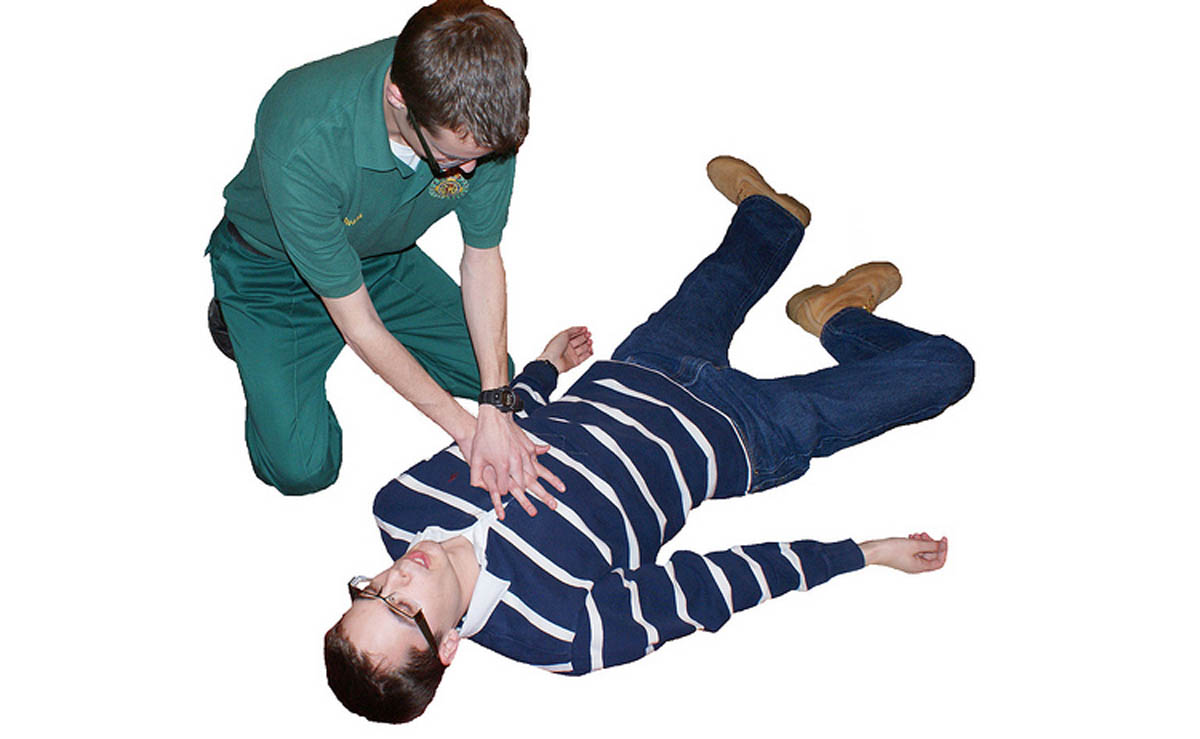Despite crushing chest pain, I was resolved not to ruin my friend's big day.
It was my pastor's final sermon. For the first time in over 30 years, all the members of his family were in the same room. I knew I was having a heart attack, but I was not going to call 911 until the last possible moment.

Read More: Steps To Protect Your Heart With A Diet
I actually was having a heart attack, but because I told the paramedic I was experiencing pain on the right side of my chest rather than the left, and he understood his training to have been that heart pain only occurred on the left side of the chest, he and his partner only took me very slowly to the hospital. They did not offer me nitroglycerin or Aspirin, they did not take an EKG, and they had to be vigorously persuaded (this being in the United States, by my attorney friend who called 911 for me) to take me to the hospital at all.
Fortunately for me, the attending physician at the ER didn't have preconceived notions of where chest pain should be and I was admitted to the hospital and given the treatment that saved my life.
First Symptom of Heart Attack Is Often Death
Many people, unfortunately, are not as fortunate as I was. In the United States alone, for 500,000 to 700,000 people every year, the "presenting symptom" of heart attack is death. Even with modern medical care, heart attacks kill between 30% and 50% of people who have them.
A heart attack usually causes pain on the left side of the chest. It may, as was the case for me, cause pain on the right side of the chest. Women often feel heart attack pain in the lower chest. A study of over 1.1 million cases published in the Journal of the American Medical Association, however, found that
Some of the Most Dangerous Forms of Heart Attack May Not Cause Chest Pain
The infamous widowmaker heart attack (a myocardial infarction center in the left anterior descending artery) may only cause pain when the person having the attack bends at the waist. Or it may cause pain in the feet that seems to radiate up the legs. Or even this most deadly of all heart attacks may cause no pain at all.
The most dangerous kind of heart attack, however, is a heart attack that is not treated. Because heart attack is still thought of as a "man's disease," women who have heart attack symptoms are often less aggressively treated than men. Because heart attack is associated with the elderly, younger people who have heart attack symptoms are often less aggressively treated than older people. And because heart attack stereotypically causes shortness of breath, crushing (rather than twisting or burning) pain, and pain that doesn't go away, people who don't have shortness of breath or persistent crushing pain may not get the treatment they need. Women under the age of 55 who don't have chest pain have 2 to 3 times greater risk of dying than men over 55 who do, due to disparities in treatment.
If you are having a heart attack, you may have to demand treatment. But you won't demand treatment if you don't know the symptoms to be on the lookout for.
Twelve Symptoms Of Heart Attack You Need to Know
Chest pain, of course, is the classic symptom of heart attack. Most but not all men tend to have a kind of crushing chest pain that is caused by an "exploding" cholesterol plaque in a coronary artery. Many women and some men, however, have a less intense chest pain caused by a "sloughing off" cholesterol plaque that is slowly blocking a coronary artery. The end result of both processes is the same, but the pain they produce can be quite different.

In addition to chest pain, heart attacks can manifest in these symptoms (and more).
Read More: American Heart Association Warns Of Surprising “Salty Six” Foods
1. Syncope
Syncope, or passing out, is one of the most dangerous symptoms of heart attack. Because of delays in getting appropriate treatment, heart attack victims who experience syncope are up to 11 times more likely to die in the hospital or on the way.
2. Diaphoresis
Diaphoresis, or sweating, is associated with a relatively good outcome of heart attack treatment. People who get sweaty (usually across the forehead or across the chest) during a heart attack are up to 4 times more likely to survive their treatment.
3. Sense of impending doom
In the case of heart attack, people who have a vague sense of impending doom tend to call for emergency treatment more quickly. A study at the Central Hospital in Augsburg, Germany, found that heart attack patients who had a fear of death were up to 30 times more likely to survive than the average.
4. Nausea
One study found that heart attack victims who suffer nausea with their attack are about 50% more likely to survive, probably because this unpleasant symptom gets them to seek help faster.
5. Dyspnea
Dyspnea, or shortness of breath, is both a symptom of heart attack and a sign of a bad prognosis. People who are out of breath or who can't catch their breath are up to twice as likely to die from their heart attacks. Shortness of breath is an especially important indicator of heart attack in Hispanic women who have diabetes.
6. Abdominal pain
Like nausea, abdominal pain is associated with increased likelihood of survival. A German study found that heart attack patients who present with abdominal pain were up to 30 times more likely to survive their heart attacks.
7. Arm pain
About 10% of women and 19% of men, according to a study at the Orvis School of Nursing at the University of Nevada, have arm pain during a heart attack. Although arm pain is a stereoptypical symptoms of heart attack, most heart attack victims don't actually experience it.
8. Dizziness
About 20% of people who have heart attacks experience dizziness. However, if dizziness is the predominant symptom, the doctor will usually look for a problem other than a heart attack.
9. Prior percutaneous coronary intervention
If you have had a cardiac catheterization to place stents in your arteries, you almost certainly will be admitted to the hospital for observation.
10. Diabetes
People who have diabetes, especially people who have had diabetes for more than 15 years, often develop a condition known as neuropathy. A diabetic's nervous system in many cases simply does not register pain, or refers pain away from the site of an actual injury. Diabetics with prior history of heart disease need careful monitoring to rule out--or rule in--heart attack.
11. Pain between the shoulder blades
While chest pain or discomfort is the most typical symptom, some people, especially women and older adults, may experience atypical or less recognizable symptoms during a heart attack. Pain between the shoulder blades is one of these atypical symptoms. The pain may feel like a dull ache or pressure between the shoulder blades, and it can sometimes be mistaken for muscle pain or strain.
12. Chest pressure with physical activity
In some cases, the chest pain or discomfort may be triggered or worsened by physical activity and relieved by rest. This is known as "stable angina," and it can be a warning sign of an impending heart attack.
Having any of these symptoms or even having all of these symptoms with or without chest pain does not necessarily mean you are or are not having a heart attack. That's something that requires medical testing to know for sure. If you think you may be having a heart attack, however, do not spend your time surfing the Internet to see if your symptoms may be real. Call for help to take you (don't drive yourself) to a hospital now.
- Kirchberger I, Heier M, Kuch B, von Scheidt W, Meisinger C. Presenting symptoms of myocardial infarction predict short- and long-term mortality: The MONICA/KORA Myocardial Infarction Registry. Am Heart J. 2012 Dec.164(6):856-61
- Stephen SA, Darney BG, Rosenfeld AG. Symptoms of acute coronary syndrome in women with diabetes: an integrative review of the literature. Heart Lung. 2008 May-Jun. 37(3):179-89
- Photo courtesy of wiltshiresp on Flickr: www.flickr.com/photos/wiltshirespc/3300967917
- Photo courtesy of barkbud on Flickr: www.flickr.com/photos/barkbud/5180808452


Your thoughts on this